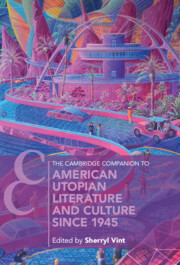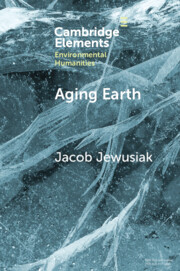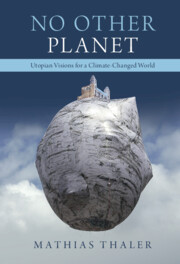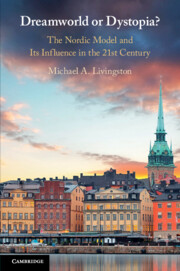Refine search
Actions for selected content:
34 results
Chapter 9 - Temporal Cycles and the Psychology of Time
- from Part II - The New Psychology of Intergroup Relations
-
- Book:
- The Psychology of System Change and Resistance to Change
- Published online:
- 23 September 2025
- Print publication:
- 09 October 2025, pp 185-200
-
- Chapter
- Export citation
Chapter 17 - The Uncertainty of Coming Times in Contemporary Irish Fiction
- from Part IV - Revivalist Futures
-
-
- Book:
- The Revival in Irish Literature and Culture
- Published online:
- 04 September 2025
- Print publication:
- 18 September 2025, pp 341-359
-
- Chapter
- Export citation
Chapter 8 - Whiteness in Nineteenth-Century Speculative Writing
- from Part II - Whiteness in the American Literary Imagination
-
-
- Book:
- Whiteness and American Literature
- Published online:
- 19 June 2025
- Print publication:
- 03 July 2025, pp 121-134
-
- Chapter
- Export citation
Chapter 9 - Launching into a Brown Future
- from Part II - Transforming Genres
-
-
- Book:
- Latinx Literature in Transition, 1992–2020
- Published online:
- 19 June 2025
- Print publication:
- 03 July 2025, pp 167-184
-
- Chapter
- Export citation
Chapter 15 - George Orwell
- from Part III - 1945–1975
-
-
- Book:
- The British Novel of Ideas
- Published online:
- 05 December 2024
- Print publication:
- 12 December 2024, pp 259-273
-
- Chapter
- Export citation
Chapter 36 - The futures of International Relations
- from Part 4 - The new agenda: Globalisation and global challenges
-
-
- Book:
- An Introduction to International Relations
- Published online:
- 31 August 2024
- Print publication:
- 12 August 2024, pp 479-489
-
- Chapter
- Export citation
Chapter 2 - American Futures
-
-
- Book:
- The Cambridge Companion to American Utopian Literature and Culture since 1945
- Published online:
- 09 May 2024
- Print publication:
- 16 May 2024, pp 41-61
-
- Chapter
- Export citation

The Cambridge Companion to American Utopian Literature and Culture since 1945
-
- Published online:
- 09 May 2024
- Print publication:
- 16 May 2024
Chapter 23 - Parable Series (1993, 1998): Octavia E. Butler
- from Part III - Case Studies
-
-
- Book:
- The Cambridge Companion to the Twentieth-Century American Novel and Politics
- Published online:
- 07 October 2023
- Print publication:
- 12 October 2023, pp 330-340
-
- Chapter
- Export citation
Chapter 8 - Biodystopia
- from Part IV - Genome Time
-
- Book:
- Literature, Science, and Public Policy
- Published online:
- 03 August 2023
- Print publication:
- 17 August 2023, pp 163-181
-
- Chapter
-
- You have access
- Open access
- HTML
- Export citation
Chapter 5 - The Modern Synthesis
- from Part III - The Modern Synthesis
-
- Book:
- Literature, Science, and Public Policy
- Published online:
- 03 August 2023
- Print publication:
- 17 August 2023, pp 97-119
-
- Chapter
-
- You have access
- Open access
- HTML
- Export citation

Aging Earth
- Senescent Environmentalism for Dystopian Futures
-
- Published online:
- 12 July 2023
- Print publication:
- 03 August 2023
-
- Element
- Export citation
17 - Killing for the Hindu Nation
- from Part III - Religious Nationalism
-
-
- Book:
- The Cambridge Companion to Religion and War
- Published online:
- 04 May 2023
- Print publication:
- 11 May 2023, pp 349-368
-
- Chapter
- Export citation

No Other Planet
- Utopian Visions for a Climate-Changed World
-
- Published online:
- 07 October 2022
- Print publication:
- 22 September 2022
Chapter 14 - Speculative Fiction and Post-Capitalist Speculative Economies: Blueprints and Critiques
- from Part II - Contemporary Critical Perspectives
-
-
- Book:
- The Cambridge Companion to Literature and Economics
- Published online:
- 28 July 2022
- Print publication:
- 11 August 2022, pp 227-242
-
- Chapter
- Export citation
10 - Climate on Screen
- from Part III - Ways of Telling Climate Stories
-
-
- Book:
- The Cambridge Companion to Literature and Climate
- Published online:
- 31 March 2022
- Print publication:
- 07 April 2022, pp 162-176
-
- Chapter
- Export citation
Chapter 7 - Children in Transit / Children in Peril: The Contemporary US Novel in a Time of Climate Crisis
- from Part II - Environmental Genres and Media
-
-
- Book:
- The Cambridge Companion to American Literature and the Environment
- Published online:
- 10 March 2022
- Print publication:
- 17 March 2022, pp 93-104
-
- Chapter
- Export citation

Dreamworld or Dystopia?
- The Nordic Model and Its Influence in the 21st Century
-
- Published online:
- 16 December 2021
- Print publication:
- 16 December 2021
5 - Digital Fiction
- from Part I - Forms
-
-
- Book:
- The Cambridge Companion to Twenty-First Century American Fiction
- Published online:
- 02 September 2021
- Print publication:
- 23 September 2021, pp 100-120
-
- Chapter
- Export citation
6 - Visions of a Digital Future
-
-
- Book:
- Vision
- Published online:
- 17 September 2021
- Print publication:
- 26 August 2021, pp 154-179
-
- Chapter
- Export citation
